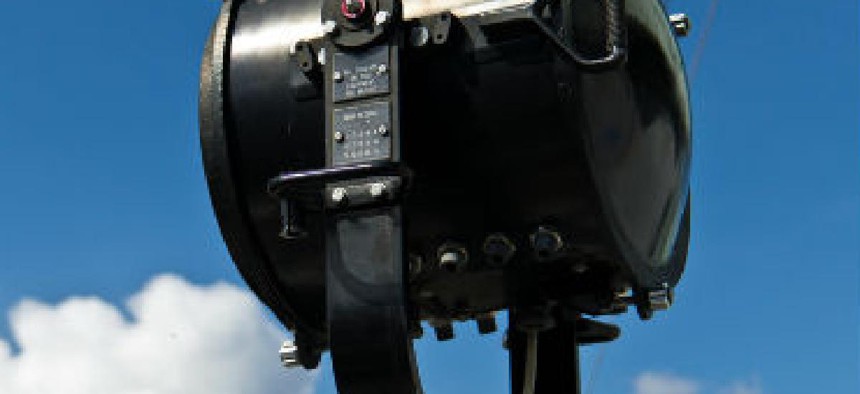Navy makes old signals new again

A new project will bring a 200-year-old seaborne communications technology into the current digital ocean.

The Navy is testing whether it can speed automatic “radio silent” communications among vessels at sea by connecting a tablet computer to ships’ signal lamps.
Oil lamps with light-blocking slats, or some sort of controlled veiled light source, have been aboard U.S. Navy vessels for at least two centuries. They allow signalmen on other vessels or on shore to communicate without creating sound or breaking radio silence. More recent versions use high-powered light bulbs, and signalmen flip the slats around it to send a coded message.
According to a July 19 report in U.S. Naval Institute (USNI) News, the Office of Naval Research’s TechSolutions tested a system in June that would replace a trained signal operator with a camera and a digital tablet. The test came in response to a 2016 request from the Naval Surface and Mine Warfighting Development Center.
“Our tablet has the text messaging interface software on it,” ONR TechSolutions Assistant Program Manager Jason Payne told USNI News. “It has a USB camera that mounts to the searchlight, and it’s got a signal cable to the controlling mechanism.”
To use the system, a sailor types the message on the tablet, and it is flashed from one signal lamp and picked up by a camera on the opposing lamp, which sends the message to the local tablet for translation.
In the successful June test, the system sent Morse code between cruiser USS Monterey and destroyer USS Stout as the vessels sat pier-side at Naval Station Norfolk, Va.
Instead of a single high-powered xenon bulb in the lamp, the next series of tests will use an LED array, which could transmit thousands of characters per second.





